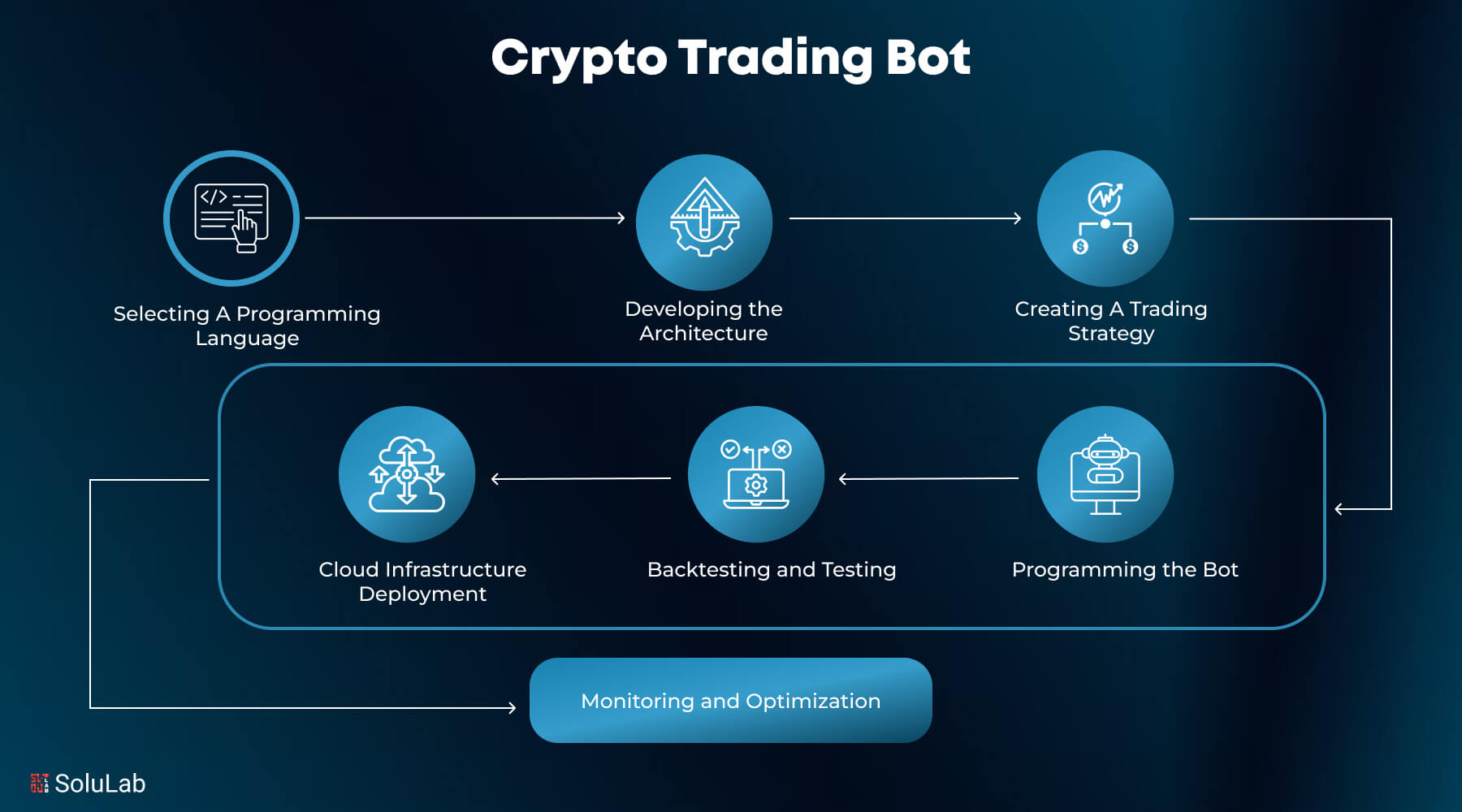Did you know that programming languages can be as divisive as pineapple on pizza? In the world of day trading bots, choosing the right programming language is crucial for success. This article dives into the best programming languages for building trading bots, highlighting the suitability of Python, JavaScript, C++, and Java for various trading strategies. We explore performance differences, the importance of backtesting, and the role of languages like R in data analysis. Additionally, we address whether beginner-friendly languages can be effective and discuss the integration of multiple languages in bot development. Lastly, discover the common libraries and frameworks that can enhance your trading automation tools with insights from DayTradingBusiness.
What programming languages are best for building trading bots?
Python is the best for building trading bots due to its simplicity and strong libraries like Pandas and NumPy. JavaScript is useful for web-based trading interfaces. C++ offers speed and low latency, ideal for high-frequency trading bots. Java provides stability and scalability for complex trading systems. R is good for statistical analysis and backtesting trading strategies.
Is Python suitable for developing day trading bots?
Yes, Python is widely used for developing day trading bots due to its simplicity, extensive libraries like Pandas and NumPy, and strong support for data analysis and automation.
Can I use JavaScript to create trading automation tools?
Yes, JavaScript can be used to create trading automation tools, especially for web-based trading platforms. Many traders use JavaScript with APIs to automate orders, analyze data, and build custom trading bots. However, Python is more popular for complex algorithms and data analysis, but JavaScript works well for browser-based or lightweight trading scripts.
What are the advantages of using C++ for trading algorithms?
C++ offers fast execution and low latency, essential for high-frequency trading algorithms. Its performance allows handling large data streams quickly, giving traders a competitive edge. C++ also provides precise control over hardware resources, reducing delays. Its efficiency helps optimize complex trading strategies in real-time. Overall, C++ enables building highly responsive, performance-critical trading bots.
Is Java a good choice for high-frequency trading bots?
Java is suitable for high-frequency trading bots due to its speed, scalability, and strong performance in real-time processing. Its low latency and efficient garbage collection make it a solid choice for rapid trade execution. However, C++ is often preferred for ultra-low latency needs, while Java remains a popular, reliable option for many trading firms.
How does R compare to Python for trading data analysis?
R is strong for statistical analysis and data visualization, making it good for backtesting trading strategies. Python offers broader libraries, easier integration with live trading platforms, and more versatility for building and deploying trading bots. For real-time data analysis and automation, Python is generally preferred over R.
Are there specific languages better for backtesting trading strategies?
Python is the best for backtesting trading strategies due to its extensive libraries like Pandas and Zipline. R is also popular for statistical analysis and modeling. C++ offers speed for high-frequency trading but is more complex. Java and JavaScript are used less often but can be effective. Python's simplicity and strong community make it the top choice.
Can I develop trading bots with beginner-friendly languages?

Yes, you can develop trading bots with beginner-friendly languages like Python and JavaScript. Python is popular for its simplicity, vast libraries, and ease of use for financial data analysis and automation. JavaScript can also be used for web-based trading bots, especially for interacting with APIs. Both languages have plenty of tutorials and community support, making them accessible for beginners.
What are the performance differences between popular trading languages?
Python is the most popular for day trading bots due to its simplicity and extensive libraries like Pandas and NumPy, enabling quick data analysis. C++ offers faster execution times, making it ideal for high-frequency trading where milliseconds matter. Java balances speed and ease of use, suitable for building reliable, scalable trading systems. JavaScript is used mainly for web-based trading platforms and dashboards, not high-speed trading. Overall, Python prioritizes ease of development, C++ focuses on speed, and Java offers a middle ground.
Is SQL necessary for managing trading data in bot development?

Yes, SQL is often necessary for managing trading data in bot development because it efficiently handles large datasets, stores historical prices, and manages transaction records. While languages like Python, Java, or C++ are used for developing trading logic, SQL databases are essential for data storage, retrieval, and analysis essential for accurate decision-making in trading bots.
How do scripting languages like Lua fit into trading bot creation?
Lua is often used for trading bots because it's lightweight, fast, and easy to embed in other platforms. Traders incorporate Lua scripting within trading software to automate strategies, manage orders, and analyze market data in real-time. Its simplicity allows quick customization and rapid execution, making it popular in environments like MetaTrader or proprietary trading systems. Lua fits well with other languages, providing flexibility for complex trading automation.
Are there specialized languages or tools for algorithmic trading?
Yes, Python, C++, and Java are popular for algorithmic trading. Python offers ease of use and extensive libraries like Pandas and NumPy for data analysis. C++ is favored for speed-critical trading applications. Java provides a balance of performance and ease of integration. Trading platforms like MetaTrader use MQL, a specialized language for developing trading bots.
What programming languages do professional traders prefer?
Professional traders often prefer Python for day trading bots due to its simplicity, extensive libraries, and strong support for data analysis and automation. They also use C++ for high-frequency trading because of its speed and low latency. Java is common for developing scalable trading platforms, while R is popular for statistical analysis and backtesting. Some traders incorporate JavaScript for web-based trading interfaces.
How important is language choice for trading bot security?

Language choice impacts security because some languages have stronger safety features and better libraries for encryption and error handling. Python, C++, and Java are popular for trading bots; Python's simplicity helps reduce bugs, while C++ offers speed and control. Using a language with good security libraries and active community support minimizes vulnerabilities. Ultimately, choosing a language with built-in security features and proper coding practices is crucial for protecting your trading bot from exploits.
Can I integrate multiple languages in a single trading bot?
Yes, you can integrate multiple programming languages in a single trading bot. For example, you might use Python for strategy development and C++ for low-latency trading functions. Combining languages allows you to leverage their strengths—Python for flexibility and rapid prototyping, C++ for speed. Just ensure the components communicate smoothly, often via APIs or shared data formats.
What are the common libraries and frameworks for trading bot development?
Python is the top choice for day trading bots, with libraries like Pandas, NumPy, and TA-Lib for data analysis, and frameworks like QuantConnect and Backtrader for strategy development. JavaScript is also used, especially for web-based trading interfaces, using libraries like ccxt for exchange API integration. C++ is favored for high-frequency trading bots due to its speed, with libraries like QuickFIX for financial messaging. R is popular for statistical analysis with packages like quantmod and TTR. Overall, Python dominates for its simplicity and extensive trading libraries.
Conclusion about What Programming Languages Are Used for Day Trading Bots?
In conclusion, selecting the right programming language for developing day trading bots is crucial for optimizing performance and efficiency. Python stands out for its ease of use and extensive libraries, while C++ offers speed for high-frequency trading. Java and JavaScript also provide viable options depending on specific needs. For those just starting, beginner-friendly languages can still enable effective trading automation. Ultimately, aligning your choice with your trading strategy and goals, along with leveraging resources like DayTradingBusiness, can significantly enhance your bot development journey.
Learn about What Are the Most Common Myths About Day Trading Bots?